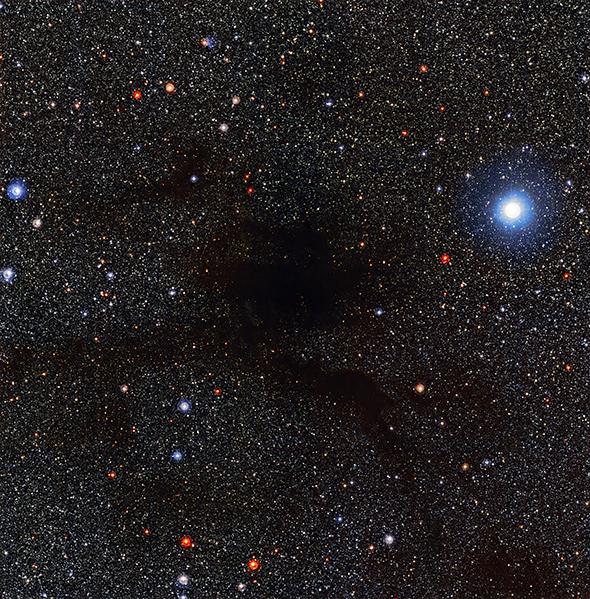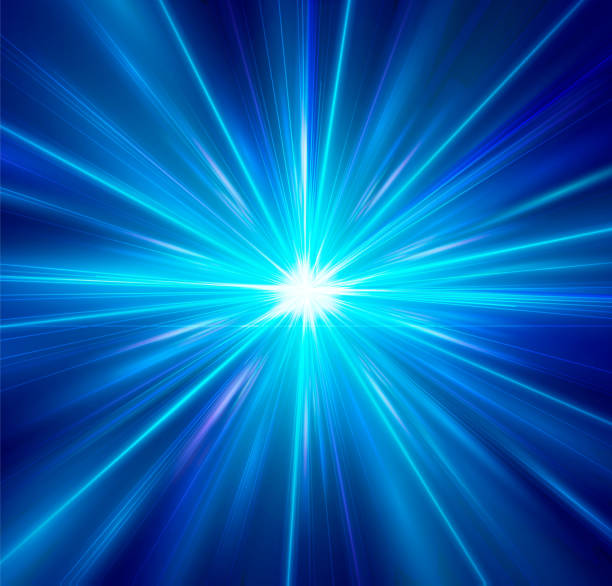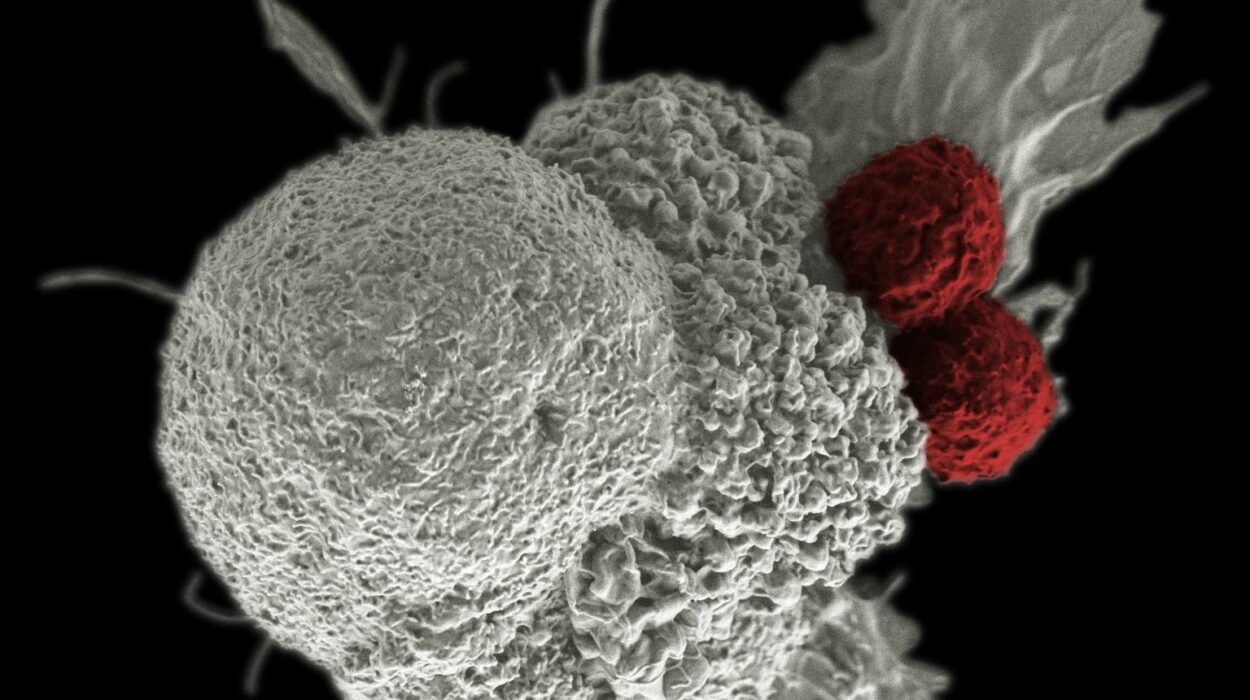Among the most mysterious and beautiful features of the cosmos are the dark clouds that blot out the stars in certain regions of the Milky Way. To the casual observer, these appear as black voids in the otherwise glowing tapestry of the night sky. However, these dark patches are not empty at all. They are dense, cold concentrations of gas and dust—cosmic nurseries where new stars are born. These regions, known as molecular clouds or dark nebulae, are among the most fascinating structures in astrophysics. To understand dark clouds is to understand the very process of cosmic evolution, for it is within these clouds that stars, planets, and even the elements necessary for life originate.
The Nature of the Interstellar Medium
The space between stars, often imagined as an absolute void, is in fact filled with an intricate web of gas, dust, and cosmic radiation known as the interstellar medium, or ISM. Though tenuous by terrestrial standards, the ISM is fundamental to galactic structure and evolution. It serves as both the material reservoir for future generations of stars and the repository of matter returned to space by dying stars.
The ISM is composed primarily of hydrogen—the most abundant element in the universe—along with helium and trace amounts of heavier elements, or “metals” in astronomical terminology. These elements exist in various phases, ranging from hot, ionized plasma to cold molecular gas. The density and temperature of each region determine its physical and chemical behavior.
Within the ISM, the most crucial regions for star formation are the cold, dense clouds of molecular hydrogen (H₂). Because molecular hydrogen is difficult to detect directly—it emits weak radiation at cold temperatures—astronomers often trace it using other molecules such as carbon monoxide (CO). These molecular clouds are the true “dark clouds” of space, their opacity caused by the dust grains mixed within them that absorb and scatter starlight.
The Composition of Dark Clouds
Dark clouds consist primarily of molecular hydrogen, but they are also enriched with dust and a variety of complex molecules. The dust, though comprising only about one percent of the total mass, plays a disproportionately important role in determining the cloud’s appearance and evolution. Dust grains are typically a fraction of a micron in size and composed of silicates, carbonaceous compounds, and in colder environments, icy mantles of water, ammonia, and methane.
These dust grains are responsible for two key phenomena: extinction and reddening. Extinction refers to the dimming of starlight as it passes through a dust cloud, while reddening occurs because shorter wavelengths (blue light) are scattered more efficiently than longer wavelengths (red light). Together, these effects give dark clouds their distinctive silhouette against the luminous backdrop of the Milky Way.
At the same time, the dust within these clouds shields the molecular gas from ultraviolet radiation, preventing its dissociation and allowing molecules to survive. This self-shielding creates the conditions necessary for cooling and condensation, setting the stage for star formation.
Temperature and Density in Molecular Clouds
Molecular clouds are some of the coldest objects in the universe. Typical temperatures range between 10 and 30 Kelvin—just a few degrees above absolute zero. At such low temperatures, the gas pressure is minimal, allowing gravity to dominate. Despite their low temperatures, molecular clouds are enormous in scale, spanning tens to hundreds of light-years and containing masses equivalent to thousands or even millions of Suns.
The density of a molecular cloud varies dramatically from region to region. In the most diffuse areas, there may be only a few hundred particles per cubic centimeter—still vastly more than the surrounding interstellar medium. In the densest cores, however, densities can exceed 10⁶ particles per cubic centimeter, sufficient for gravity to begin pulling the material inward. These dense cores are the cradles of future stars.
Because these clouds are so cold and dense, they emit most of their energy in the form of long-wavelength infrared and radio radiation. This makes them invisible to optical telescopes but readily observable with instruments sensitive to these longer wavelengths. Observatories such as ALMA (the Atacama Large Millimeter/submillimeter Array) have revolutionized our understanding of molecular clouds by revealing their structure and dynamics in exquisite detail.
How Dark Clouds Form
Dark clouds form through the gradual accumulation of gas and dust in the interstellar medium. This process can occur in several ways. One common mechanism is the compression of gas by shock waves from supernova explosions or stellar winds. These shock waves propagate through the ISM, sweeping up material and increasing its density. When the density becomes high enough, molecules begin to form, and the cloud cools rapidly through radiative processes.
Another formation pathway involves the convergence of large-scale galactic flows. Spiral arms in galaxies act as density waves, compressing gas as it orbits the galactic center. As gas enters these regions, it slows down, piles up, and cools, eventually forming massive molecular complexes. Over time, turbulence and self-gravity within these complexes create localized density enhancements that evolve into individual dark clouds.
Magnetic fields also play an essential role in the formation and evolution of molecular clouds. While gravity pulls material inward, magnetic pressure and turbulence counteract collapse, creating a delicate balance that determines the cloud’s lifetime and fragmentation pattern. Observations of polarized starlight and dust emission provide direct evidence of magnetic alignment within dark clouds, indicating that these forces shape their morphology.
The Role of Dust and Chemistry
Dust grains serve not only as light blockers but also as chemical laboratories. The surfaces of dust particles provide sites for chemical reactions that would be improbable in the gas phase. When atoms such as hydrogen and oxygen collide with a dust grain, they can combine to form molecules like water, methanol, or formaldehyde. Over time, these grains accumulate icy coatings rich in complex organic compounds, potentially the precursors of life’s building blocks.
The chemistry within dark clouds is driven by a combination of cosmic rays, ultraviolet photons, and the interactions between gas and dust. Even though ultraviolet light is largely blocked, cosmic rays penetrate deeply into clouds, ionizing atoms and initiating chemical chains. The resulting molecules emit characteristic spectral lines in the radio and infrared range, which astronomers use to study cloud composition and dynamics.
Some dark clouds exhibit particularly rich chemistry, containing over a hundred identified molecular species. These include simple diatomic molecules such as CO and CN, as well as complex organic molecules like ethanol and amino acid precursors. Such chemical complexity has profound implications for astrobiology, suggesting that the seeds of life may form long before planets exist.
Observing Dark Clouds
Because dark clouds obscure visible light, studying them requires instruments that can detect radiation at longer wavelengths. Radio telescopes are ideal for tracing molecular emission lines, particularly the rotational transitions of carbon monoxide, which serve as a proxy for molecular hydrogen. Infrared observatories, such as the James Webb Space Telescope, can penetrate dust and reveal the embedded stars forming within these opaque regions.
In addition to direct observation, astronomers study dark clouds through their silhouettes against bright backgrounds. The most famous examples are the dark nebulae cataloged by Edward Emerson Barnard in the early 20th century, such as the Horsehead Nebula in Orion and the Pipe Nebula in Ophiuchus. These striking features, visible in contrast to luminous star fields or emission nebulae, provide a window into the hidden structure of the ISM.
Infrared imaging has unveiled the hidden interiors of many dark clouds, showing networks of filaments, knots, and cavities carved by newly forming stars. These high-resolution observations reveal that molecular clouds are far from uniform; they are dynamic, turbulent structures shaped by competing forces of gravity, pressure, and radiation.
The Collapse of Molecular Clouds and Star Formation
The transformation of a dark cloud into a star begins when a region within the cloud—known as a dense core—becomes gravitationally unstable. According to the Jeans criterion, this occurs when the mass of the region exceeds a critical threshold determined by temperature and density. Once gravity overwhelms internal pressure, the core begins to collapse under its own weight.
As the collapse proceeds, the central density increases, and the core heats up. The infalling material conserves angular momentum, leading to the formation of a rotating protostellar disk around the growing star. Within this disk, gas and dust gradually settle into the midplane, where planet formation may eventually occur.
The early stages of collapse are obscured by the surrounding dust, but infrared and millimeter observations allow astronomers to trace the evolution of these protostars. The process is accompanied by powerful outflows and jets that eject material along the poles, clearing cavities in the surrounding cloud and regulating the star’s growth.
Over time, nuclear fusion ignites in the core, marking the birth of a true star. The intense radiation and stellar winds from the newborn star disperse the remaining envelope of gas and dust, leaving behind a glowing nebula and, often, a cluster of siblings born from the same molecular complex.
Stellar Feedback and Cloud Disruption
Star formation does not occur in isolation. Newly formed stars profoundly influence their environment through radiation, winds, and supernova explosions. These feedback processes inject energy back into the interstellar medium, heating and dispersing the surrounding gas.
Massive stars, in particular, emit copious ultraviolet radiation that ionizes nearby hydrogen, creating bright regions known as H II regions. The expanding ionization fronts compress the adjacent molecular gas, sometimes triggering new waves of star formation. In other cases, the feedback is destructive, dispersing clouds and halting further collapse.
Supernovae represent the ultimate feedback mechanism. When a massive star ends its life in an explosion, it releases vast amounts of energy, driving shock waves through the ISM. These shocks can both destroy existing molecular clouds and seed the formation of new ones by compressing diffuse gas. Thus, star formation and destruction are part of a continuous galactic cycle.
The Lifespan of a Dark Cloud
Dark clouds are transient on cosmic timescales. Observations and simulations suggest that molecular clouds typically persist for a few million to tens of millions of years before being dispersed by feedback or galactic shear. During this time, only a small fraction of the cloud’s mass—often less than ten percent—is converted into stars.
The balance between gravity, turbulence, and magnetic fields determines how long a cloud can survive. In some cases, internal turbulence delays collapse, allowing clouds to exist in a quasi-stable state. In others, external pressure from nearby supernovae or spiral arm dynamics accelerates their evolution. Eventually, radiation and stellar winds from young stars disperse the remaining material, returning it to the ISM and completing the cycle.
The remnants of these clouds can still be observed as diffuse dust lanes or atomic hydrogen shells drifting through the galaxy. Over time, the material will mix with the broader interstellar medium, enriching it with heavy elements produced in stars. These enriched regions will later condense again, forming the next generation of molecular clouds and stars—a perpetual recycling of cosmic matter.
Famous Examples of Dark Clouds
Several dark clouds in our galaxy have become iconic laboratories for studying star formation. The Orion Molecular Cloud Complex, located about 1,300 light-years away, is one of the most active star-forming regions in the Milky Way. It contains a rich array of structures, from bright emission nebulae like the Orion Nebula (M42) to dark regions such as the Horsehead Nebula and Barnard’s Loop. Within these clouds, astronomers have identified hundreds of protostars and young stellar objects at various evolutionary stages.
Another well-studied region is the Taurus Molecular Cloud, located about 450 light-years away. Unlike Orion, Taurus lacks massive stars and instead forms low-mass stars similar to the Sun. Because of its proximity and relatively simple structure, Taurus serves as a key site for studying the earliest phases of star and planet formation.
The Ophiuchus Cloud Complex, the Lupus Clouds, and the Perseus Molecular Cloud are also prominent examples. Each exhibits unique characteristics shaped by local conditions, such as nearby supernova remnants or galactic dynamics. Observations across multiple wavelengths—radio, infrared, and X-ray—continue to reveal new insights into the diversity and complexity of these dark nurseries.
Dark Clouds Beyond the Milky Way
Dark clouds are not unique to our galaxy. Observations of nearby galaxies show that molecular clouds and star-forming regions are universal components of spiral and irregular galaxies. In the Large Magellanic Cloud, for example, astronomers have identified massive molecular complexes similar to those in the Milky Way, including regions like 30 Doradus, where intense star formation occurs within vast clouds of gas and dust.
In more distant galaxies, especially those experiencing starbursts, molecular clouds exist on even larger scales. These galaxies convert gas into stars at extraordinary rates, often triggered by mergers or interactions that compress their interstellar media. By studying molecular emissions from these galaxies, scientists can trace the processes governing star formation across cosmic time.
Even in early galaxies, observed only a few billion years after the Big Bang, evidence suggests that molecular clouds were already forming and producing stars. This indicates that the basic physics of cooling, collapse, and star formation established itself early in the universe’s history, governed by the same fundamental laws that shape our galaxy today.
Cosmic Recycling and the Continuity of Matter
The existence of dark clouds underscores the cyclical nature of the universe. The atoms that make up every star, planet, and living organism were once part of previous generations of stars that ended their lives by enriching the interstellar medium with heavier elements. These elements, mixed with hydrogen and helium, eventually coalesced into new molecular clouds, perpetuating the cycle.
This recycling process is central to galactic evolution. As successive generations of stars form and die, the chemical composition of the ISM evolves, gradually increasing the abundance of metals. This, in turn, influences the cooling efficiency, dust formation, and star formation rate of future clouds. The balance between creation and destruction—between dark clouds forming stars and supernovae dispersing them—maintains the dynamic equilibrium of galaxies.
The Connection Between Dark Clouds and Planetary Systems
Every planetary system, including our own, traces its origin to a dark cloud. The Sun and planets formed about 4.6 billion years ago from the collapse of a molecular cloud enriched by earlier generations of stars. As the solar nebula contracted, conservation of angular momentum created a rotating disk of gas and dust, within which planets gradually accreted.
The composition of this primordial cloud determined the makeup of the planets. The ices and silicates formed within dark clouds became the building blocks of comets, asteroids, and terrestrial planets. The organic molecules synthesized on dust grains may have seeded the early Earth with the precursors of life.
Thus, studying dark clouds not only reveals the mechanisms of star formation but also provides insight into the origin of planetary systems and the potential for life elsewhere in the universe. Every exoplanet discovered around a distant star is, in essence, a testament to the processes that unfold within these cold, dark cradles of creation.
Modern Research and Future Exploration
Contemporary astronomy continues to probe dark clouds with unprecedented precision. Facilities such as ALMA, the James Webb Space Telescope, and the upcoming Extremely Large Telescope are providing new data on the structure, chemistry, and dynamics of molecular clouds. High-resolution spectroscopy allows scientists to trace individual molecules and measure motions within collapsing cores, revealing the fine details of star birth.
Computational simulations complement observations, modeling how turbulence, magnetic fields, and feedback shape cloud evolution. These models have shown that molecular clouds are highly dynamic, constantly forming and dispersing rather than existing as static entities. Advances in machine learning and data analysis are enabling astronomers to extract patterns from vast datasets, accelerating discoveries about these complex systems.
One of the most exciting frontiers is the study of prebiotic chemistry in dark clouds. With sensitive instruments, scientists can detect increasingly complex organic molecules, bridging the gap between simple interstellar chemistry and the origins of life. Future missions and observatories will push these limits further, probing molecular clouds in other galaxies and even in the early universe.
Conclusion
Dark clouds in space are not empty voids but the very wombs of stars and planets. They represent the quiet, hidden phase of cosmic creation, where gravity, chemistry, and time converge to shape the building blocks of the universe. Within their cold and shadowed depths, hydrogen atoms combine into molecules, dust grains grow icy mantles, and gravity sculpts filaments that will one day ignite as stars.
The interstellar medium, far from being inert, is a living system of constant transformation. Matter cycles endlessly through phases of gas, dust, stars, and back again, weaving the grand narrative of galactic evolution. By studying dark clouds, we not only glimpse the process of star formation but also trace the cosmic lineage that connects the birth of stars to the emergence of life.
In the end, the darkness of these clouds is not an absence of light but a veil of potential—a prelude to illumination. The stars we see scattered across the night sky, including our own Sun, owe their existence to these hidden nurseries. To understand dark clouds is to understand the cosmic origins of everything we know, for within their depths lie the beginnings of all creation.






